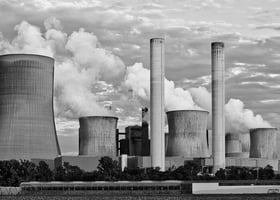The Federal Energy Regulatory Commission (FERC) Order 881 has ushered in a new era in the energy...
The SunZia HVDC Line and the Role of AI in US Grid Expansion
The United States stands tall as a symbol of infrastructural marvels, and the SunZia HVDC transmission line's narrative captures this spirit. Stretching over 885 km to bridge New Mexico and Arizona, SunZia has, for the past 17 years, manifested the US's ambition to strengthen its grid while pivoting to renewable energy. This transmission line, set to channel a colossal 3,000 megawatts of wind-generated electricity, epitomizes the nation's vision of a sustainable energy future. However, the intricate interplay of development, conservation, and bureaucratic navigation during its conception offers profound insights into the intricacies of grid expansion.

A Vision Materializes Amidst Challenges
While SunZia promised to fortify the Southwest's energy infrastructure, its path was strewn with hurdles. Key among them was obtaining the necessary right-of-way permits, given that the line would traverse diverse terrains, jurisdictions, and sensitive ecosystems. This colossal task sparked dialogues between project proponents, local communities, landowners, and environmentalists. The line's proximity to strategic locations like the White Sands Missile Range and environmental concerns like potential disturbances to migratory bird routes added layers to the permitting maze.
The challenge wasn't just about bureaucratic red tape. It ignited a broader discourse: balancing America's zeal for infrastructural enhancement and its conservation ethos. This deliberation isn't unique to SunZia. As America continues its relentless march towards renewable energy integration, such discussions will shape the future of numerous projects.
The Power of Artificial Intelligence in Grid Optimization
Parallel to these conventional challenges, the US is witnessing a technological revolution shaping its grid operations: Artificial Intelligence. With its plethora of applications, AI promises to mitigate many grid optimization and management challenges.
Predictive Maintenance and Asset Management: In 2019, the U.S. Department of Energy highlighted that unplanned equipment outages account for almost 15% of total transmission losses annually.
Dynamic Line Rating (DLR): Transmission lines, like SunZia, could benefit immensely from DLR. Using AI to dynamically assess transmission line capacity in real-time based on ambient conditions can boost capacity utilization by up to 20%.
Grid Balancing with Renewable Integration: Given the inherent variability of renewable sources, AI's predictive capabilities can enhance grid stability by accurately forecasting renewable energy output.
Topology Optimization and Voltage Control: AI can dynamically reconfigure the grid for optimal performance. Initiatives like the one undertaken by the California Independent System Operator using AI-driven topology optimization have shown potential increases in transmission efficiency. Simultaneously, AI-powered voltage and reactive power adjustments could lead to a significant drop in transmission losses.
Demand Response Forecasting: AI's prowess in data analysis can aid in accurately predicting peak demand periods, enabling utilities to implement demand response strategies more effectively.
Conclusion
The SunZia HVDC line's journey vividly portrays the challenges and aspirations defining US grid expansion. Yet, with the infusion of AI-driven innovations, the future of grid operations in the US is set to be not just about physical lines connecting vast distances but about smarter, more efficient, and resilient energy networks. These stories, rife with challenges and technological advancements, resonate with the quintessential American spirit – the indomitable resolve to dream, endure, and achieve.
To learn more about how Splight can harness these technological advancements to increase grid capacity and maintain reliability, please contact us here. We're here to provide you with detailed information and support.


